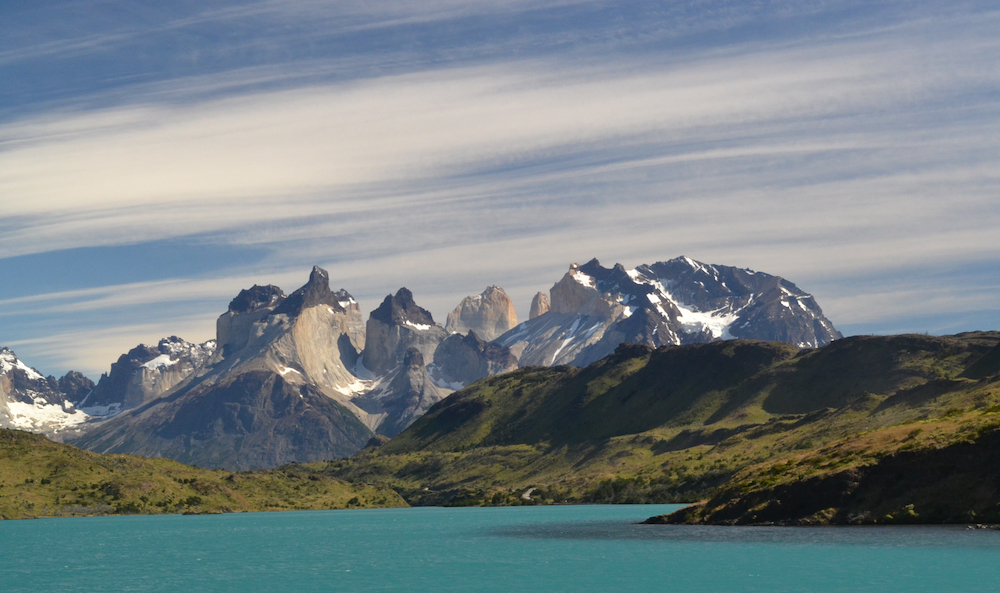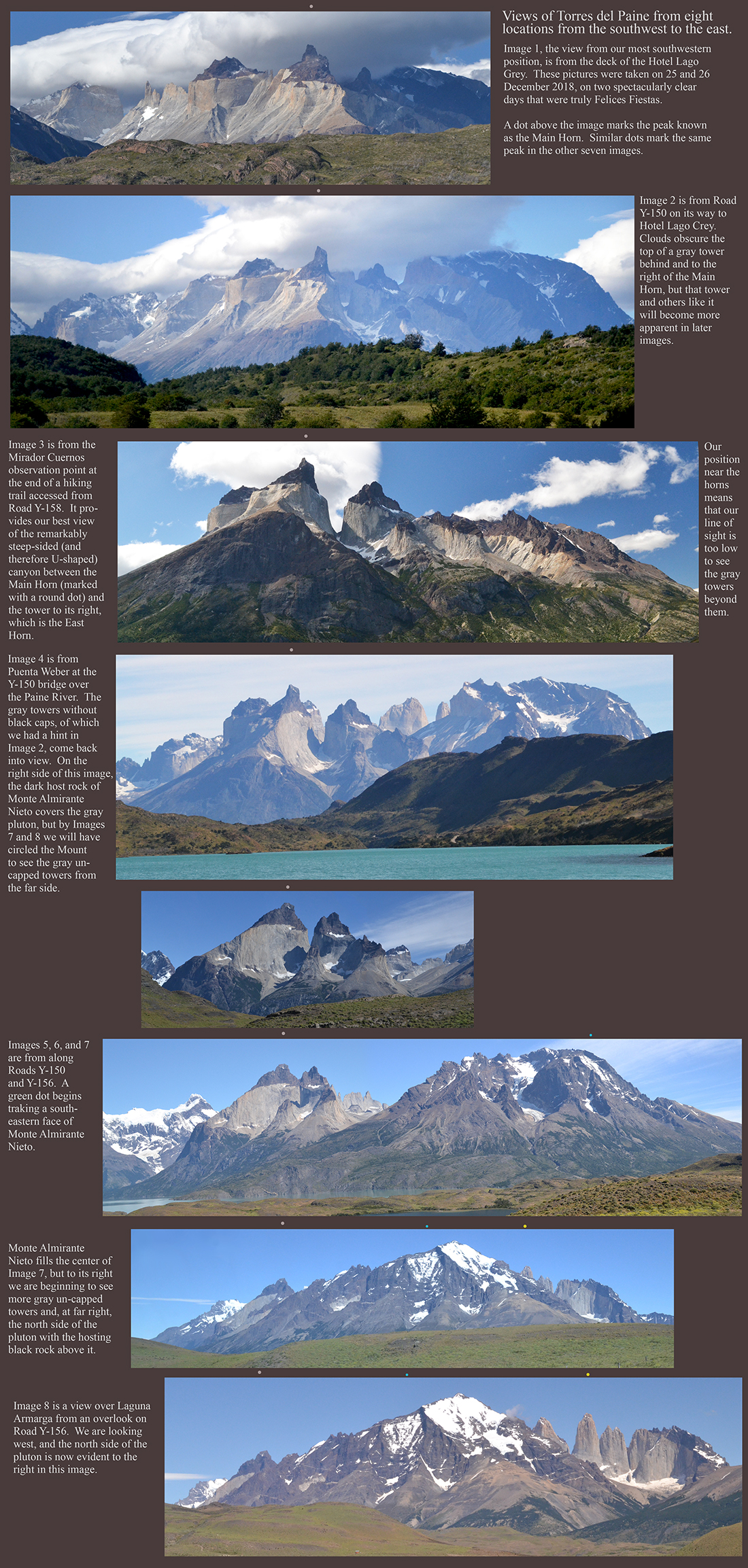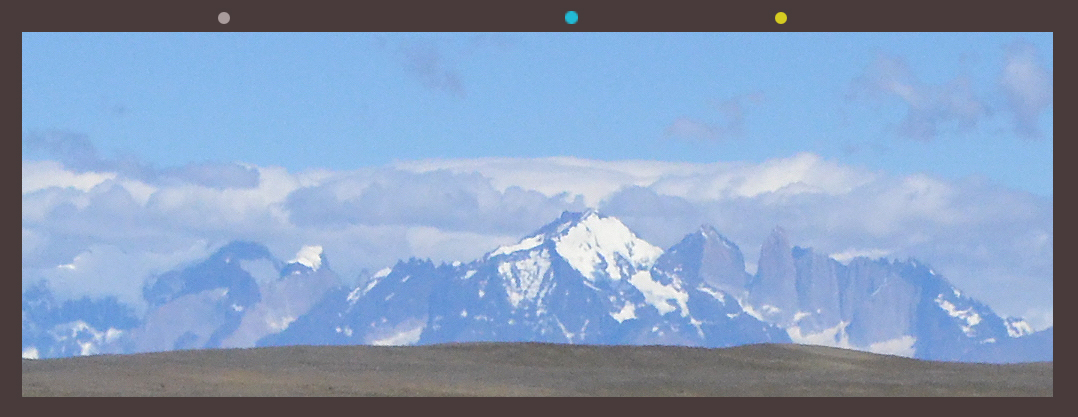1. It contains vertically-sided horns or towers of bedrock that defy our expectations of a landscape. Most geologists unfamiliar with the area would, on seeing a picture of Torres del Paine, suspect that they were looking at a painting of a fantasy, because they would think the slopes were unsustainable.
2. Torres del Paine is a textbook-worthy illustration of a pluton, a body of igneous rock generated by intrusion of magma into surrounding pre-existing rock. Rarely is so much of the pluton and so much of the surrounding rock exposed to view.
3. Torres del Paine is spectacularly beautiful. "Torres" is Spanish for "towers". "Paine" (two syllables: pie-neigh) is the local Native American word for the turquoise color of the lakes, a color given by glacial sediment in the water. "Torres del Paine" thus means something like "Towers amidst the Turquoise".
With regard to Point 3, here is a photograph:

This virtual field trip explores Torres del Paine in two ways. First, it presents eight views of Torres del Paine, beginning as seen from the southwest and moving around the mountains counter-clockwise to a final view from the east. Secondly, it presents a simplified explanation of the origin of Torres del Paine. This simplified explanation is largely that of Baumgartner et al. (2007) that is shown on a display board at the Mirador Lago Grey overlook. Later and more fully developed reports of the dating of the sequence of intrusions that made Torres del Paine are provided by Michel et al. (2008) and Leuthold et al. (2012).
Here is the sequence of views of Torres del Paine:

The image below provides a view from much farther away - at least forty miles to the east, on Highway 40 in Argentina. This view is from so far away that Monte Almirante Nieto can no longer hide all of the pluton, which we now see from its south (left) end to its north (right) end.

Here is a sequence of sketches trying to explain what we just saw. It works from earlier at the top to later at the bottom.

One important thought from the sequence above is that the pluton is the product of sequential injection of magma across several hundred thousand years, not intrusion of one large mass. Intrusive igneous rocks have been recognized since the 1800s, but geologists were long troubled by how large bodies of magma come to occupy vast volumes previously occupied by other rock. The answer is that they don't do that, at least in one event. In the portrayal above, intrusion of horizontal bodies (in a sense, a sequence of sills) progressively jacks up the overlying body of rock. The resulting body here is a planar horizontal pluton known as a laccolith.
This idea of sequential injection of magma to generate large plutons is increasingly understood as an explanation of how plutons assume their volume. For example, research by Alan Glazner and Drew Coleman of the University of North Carolina has shown that the huge pluton of the Sierra Nevada Batholith resulted from sequential injection, with the difference that intrusions there were more nearly vertical, in a sense as a sequence of dikes rather than a sequence of sills.
- - - - - - - - - - - -
Acknowledgements: The author thanks Jonathan Gutman and Maria Jose _____ for their leadership in visiting Parque Nacional Torres del Paine and for their toleration of his taking 201 pictures of the towers. However, the most profound thanks must go to the people of Chile for preserving this amazing place as a national park.
References:
Baumgartner, L.P., Michel, J., Putlitz, B., 2007. Field guide to the Torres del Paine Igneous Complex and its contact aureole. International Congress on the Southern Hemisphere, Santiago, Chile, November 18-20, 2007.
Michel, J., Baumgartner, L., Putlitz, B., Schaltegger, U., Ovtcharova, M., 2008. Incremental growth of the Patagonian Torres del Paine laccolith over 90 k.y. Geology 36, 459-462.
Leuthold J., Müntener, O, Baumgartner, L.P., Putlitz, B., Ovtcharova, M., Schaltegger, U., 2012. Time resolved construction of a bimodal laccolith (Torres del Paine, Patagonia). Earth and Planetary Science Letters 325-326, 85-92.